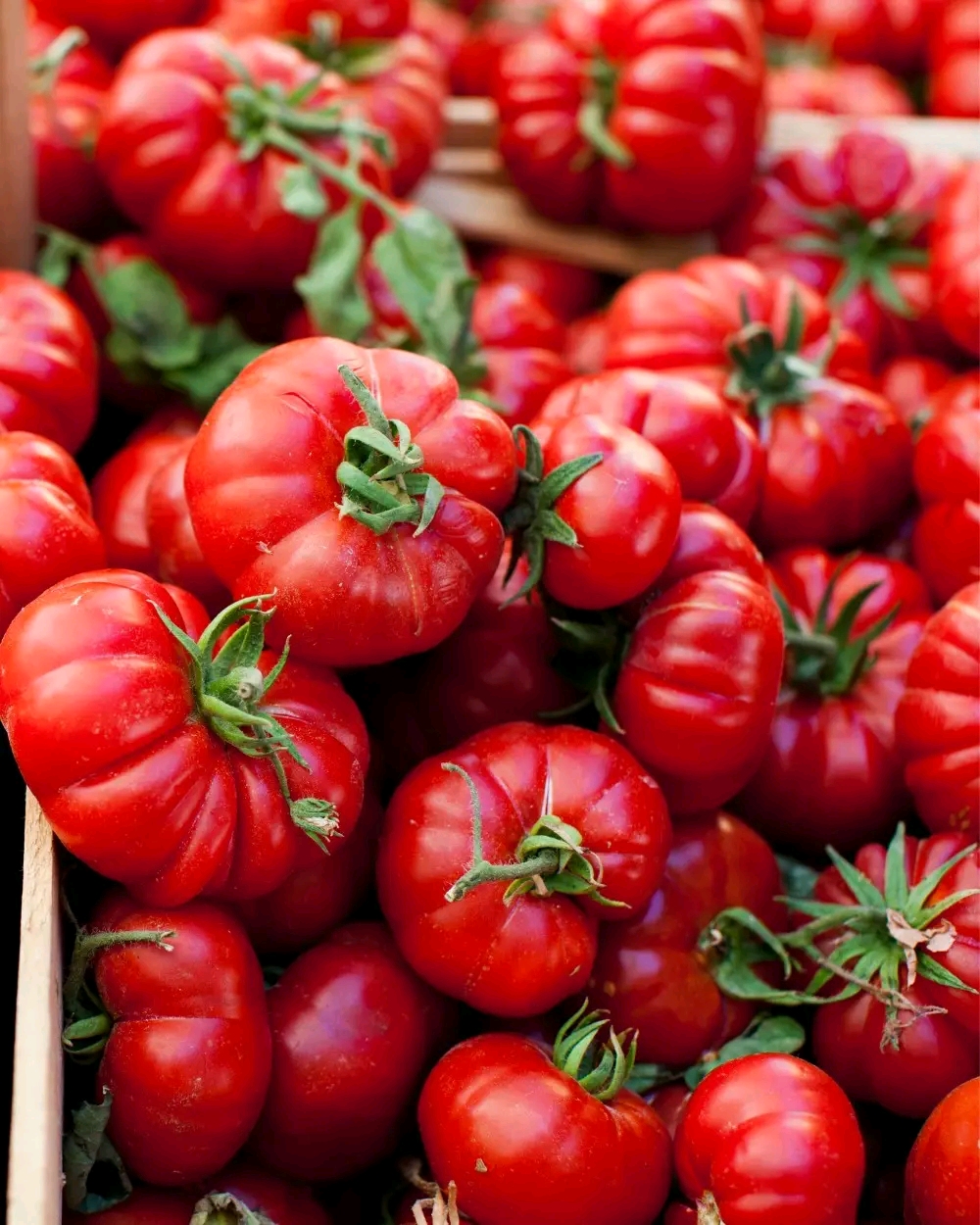Tomatoes are the crown jewel of many gardens — sweet, tangy, and bursting with summer flavor. But as any experienced grower knows, how you plant your tomatoes can make a huge difference in your harvest. Two popular methods — deep planting and sideways planting — have sparked debates in backyards and gardening forums alike.
Which one should you use? The answer depends on your climate, soil conditions, and even your tomato variety. In this guide, we’ll break down both techniques, share expert insights, and help you choose the best method for maximizing your tomato yield.
🌱 Understanding Tomato Root Growth
Tomatoes are unique because their stems can grow roots anywhere they touch soil. These adventitious roots allow for stronger, more extensive root systems when stems are buried. A stronger root system means better nutrient uptake, greater drought resistance, and improved stability.
Both deep planting and sideways planting take advantage of this trait — they just approach it differently.
🌿 Method 1: Deep Planting
How It Works
With deep planting, you bury part of the tomato stem vertically in the soil, leaving only the top few sets of leaves above ground.
Steps:
Dig a hole deep enough to bury 2/3 of the plant.
Strip off the leaves along the portion of the stem that will be underground.
Set the plant in the hole, backfill with soil, and water well.
Advantages:
Strong vertical root system — deep roots reach cooler, moister soil layers.
Better drought resistance in hot climates.
Increased stability for tall tomato varieties.
Drawbacks:
In cooler climates, deep soil can be slower to warm, potentially delaying growth.
Not ideal if you have heavy clay soil that drains poorly.
🌿 Method 2: Sideways (Trench) Planting
How It Works
Sideways planting involves laying the tomato plant horizontally in a shallow trench and gently bending the top upward above the soil. The buried stem still grows roots, but closer to the soil surface.
Steps:
Dig a shallow trench (4–6 inches deep) long enough to lay the stem sideways.
Remove lower leaves along the stem, leaving the top 3–4 sets of leaves.
Lay the plant in the trench, gently bend the tip upward, and cover the stem with soil.
Water thoroughly.
Advantages:
Soil near the surface warms faster in spring, promoting early growth.
Works well in areas with high water tables or poorly draining soil.
Less effort than digging a deep hole.
Drawbacks:
Roots are shallower, so plants may require more frequent watering in hot weather.
Less vertical stability — staking or caging is essential.
📊 Side-by-Side Comparison
| Feature | Deep Planting | Sideways Planting |
|---|---|---|
| Root Depth | Deep, vertical | Shallow, wide-spreading |
| Best for Climate | Hot, dry | Cool, wet, or heavy soils |
| Soil Warming | Slower in spring | Faster in spring |
| Water Needs | Less frequent | More frequent |
| Stability | More stable | Needs more support |
🌞 Climate Considerations
Hot & Dry Regions: Deep planting usually wins here. Roots can tap into deeper, cooler moisture reserves, reducing the stress of heat waves.
Cool & Short Seasons: Sideways planting gives the plant a head start, as the shallow soil warms more quickly in spring.
Heavy Clay or Poor Drainage: Sideways planting prevents stems from sitting in cold, soggy soil that can cause rot.
🌿 Additional Tips for Both Methods
Harden off seedlings before transplanting — gradually expose them to outdoor conditions over 7–10 days.
Mulch generously — 2–3 inches of straw, shredded leaves, or compost helps conserve moisture and regulate temperature.
Fertilize wisely — Start with a balanced fertilizer at planting, then switch to a tomato-specific formula higher in potassium and phosphorus once flowering begins.
Water deeply — Tomatoes prefer fewer, deeper waterings over frequent shallow ones.
Support early — Place cages or stakes at planting time to avoid damaging roots later.
🌸 The Hybrid Approach
Some gardeners swear by a hybrid method: plant the tomato at a diagonal angle — deeper than a trench planting but not perfectly vertical. This creates a balance between deep root access and quicker soil warming.
🧪 What Garden Trials Show
Several university extension programs have compared these techniques:
University of Maine found sideways planting led to earlier flowering and harvest in cool climates, but yields evened out later in the season.
Kansas State University observed that deep planting improved drought tolerance and reduced blossom drop in hot summers.
Experienced gardeners often note that plant health and yield differences are minimal if watering and feeding are consistent.
🍅 Choosing the Right Method for You
Ask yourself these questions before deciding:
Is my climate hot and dry or cool and damp?
Does my soil drain well or hold water?
Am I planting early in the season or after the soil has warmed?
Do I want earlier harvests or better drought resilience?
If you answered “hot, dry, well-drained” → Deep planting might be best.
If you answered “cool, damp, heavy soil” → Sideways planting could be your winner.
🏡 Final Thoughts
Both deep and sideways planting techniques use the tomato’s natural ability to root along its stem to your advantage. Neither method is wrong — it’s about matching the technique to your environment and your gardening goals.
If you’re unsure, try an experiment: plant half your tomatoes deep and half sideways this year. Keep notes on growth speed, water needs, and harvest timing. By the end of the season, you’ll have a personalized answer — and a bounty of tomatoes to enjoy.
In gardening, sometimes the best advice is to listen to your plants. They’ll tell you which method works best for your little patch of earth.
More Articles You Might Like
-
Texas Toast Sloppy Joes: The Crunchy, Cheesy Upgrade You Didn’t Know You Needed
There’s something timeless about sloppy joes. For generations, this saucy, savory, and slightly sweet ground beef sandwich has been a go-to comfort food in American kitchens. It’s quick, filling, and family-friendly—perfect for busy weeknights. But what if we told you there’s a way to take this classic dish up a notch? Enter the Texas Toast…
-
Classic Pig Pickin’ Cake
When it comes to Southern desserts, few sweets shine as brightly as the Classic Pig Pickin’ Cake. This nostalgic cake, sometimes called a “Mandarin Orange Cake,” has roots deep in Southern tradition. It gets its playful name from its frequent appearance at pig pickin’s—Southern-style barbecue gatherings where communities come together to enjoy slow-cooked pork, sides,…
-
Lemon Garlic Butter Chicken with Creamy Parmesan Pasta
There’s something irresistible about the combination of tender, golden-browned chicken paired with a creamy pasta coated in Parmesan cheese. Add the brightness of lemon, the depth of garlic, and the richness of butter, and you have a recipe that feels indulgent yet approachable enough for a weeknight dinner. Lemon Garlic Butter Chicken with Creamy Parmesan…



